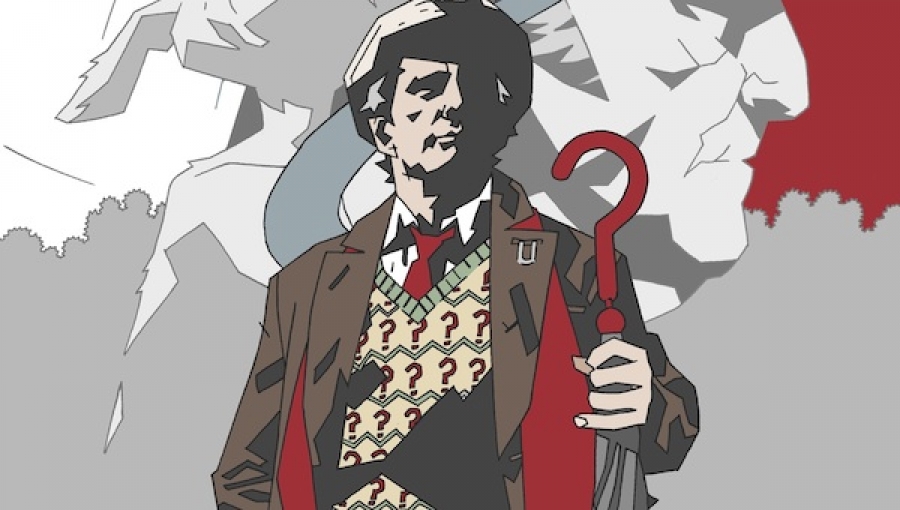This month’s issue of Doctor Who Classics is all over the map. So far, each single issue has covered no more than two different stories. This one has three, which makes the pacing a little frenetic.
First up, we have the conclusion of “Nemesis of the Daleks,” whose story took up the whole of Issue #3. The end of the adventure takes up but a scant third of #4, though I was hoping it would be another full issue. After all, the story is being driven by Abslom Daak: Dalek Killer, a fun and compelling character who’s worth spending a bit more time with.
Abslom, if you’ll recall, is an over-the-top action hero type, whose life is dedicated to hunting and killing Daleks using his chainsword—which may be second only to the lightsaber as the coolest weapon in sci-fi history. He won’t rest until every Dalek is wiped off the face of the universe. The Daleks, meanwhile, are busy trying to wipe everyone else off the face of the universe by constructing a Dalek Death Wheel that blasts poison gas and kills on a planetary scale.
The Doctor is almost incidental to this tale, taking a backseat while Abslom faces off with the Daleks in a final showdown to save the poor, primitive Helkians whom the Daleks have enslaved—and the rest of the universe, to boot. The action is entertaining, if all too brief, followed by a quick denouement wherein the Helkians wax philosophical. While in the last issue they could barely speak intelligibly and had no personality of their own other than “generic enslaved people,” they’ve apparently now been elevated to the level of noble race with ancient tribal wisdom. This raises a vast number of questions about some of the things they said and did in the previous issue, but there’s no time to get into them, because we’re already moving on to . . .
“Stairway to Heaven.” The TARDIS materializes in a strange dome, wherein the Seventh Doctor runs into a blue, gargoyle-like creature who says little other than “Excuse me,” as he works tirelessly to build an enormous staircase. To say any more than that about this story would be a spoiler, since the piece is far too short to go into in any detail; however, the quick vignette that’s weaved in those few pages is bizarre and fascinating and raises a lot of interesting questions about artists being gods of their own creations, the relationship between creation and creator, and more. Not TOO much more, though, as there simply isn’t time. We still have one more story to cover before this issue is finished . . .
“Hunger from the Ends of Time.” This story is only ten pages, yet still somehow manages to be split up into two parts. It takes place on a planet called Catalog, which is essentially an early incarnation of The Library from Series 4 of the modern show. A single planet, which acts as a repository for all the knowledge and information in the universe. Since one planet isn’t nearly enough room to store all of that information efficiently, Catalog’s curators create a timey-wimey version of cloud storage. It’s a very clever solution, but, of course, it goes wrong and attracts a swarm of voracious microscopic creatures who could almost be considered an early incarnation of the Vashta Nerada from “Silence in the Library” and “Forest of the Dead.” They really are quite different creatures, despite their seeming surface similarities, but still, it does make me wonder if Steven Moffat, who penned those episodes, read this story in Doctor Who Magazine in 1990.
The story has a couple of clever gimmicks that make it unique and introduces some rather interesting concepts . . . but, unfortunately, there’s not nearly enough time to explore any of them properly in the 10 pages that this story takes up. Everything moves quickly in this issue, but this adventure in particular is the one that suffers the most from it. It could easily have been expanded into a much longer story and taken more time to build up this world that instead it’s only barely able to touch on.
Though all three stories presented are interesting and entertaining, this issue doesn’t feel quite as satisfying as the previous issues. All three stories just seem like they’re trying to do too much in too short of a space, and, as a result, there are a lot of unexplored avenues and unanswered questions. Still, the adventures are fun, several of the concepts spark the imagination, and the stories, brief as they are, in the end are still worth reading.

